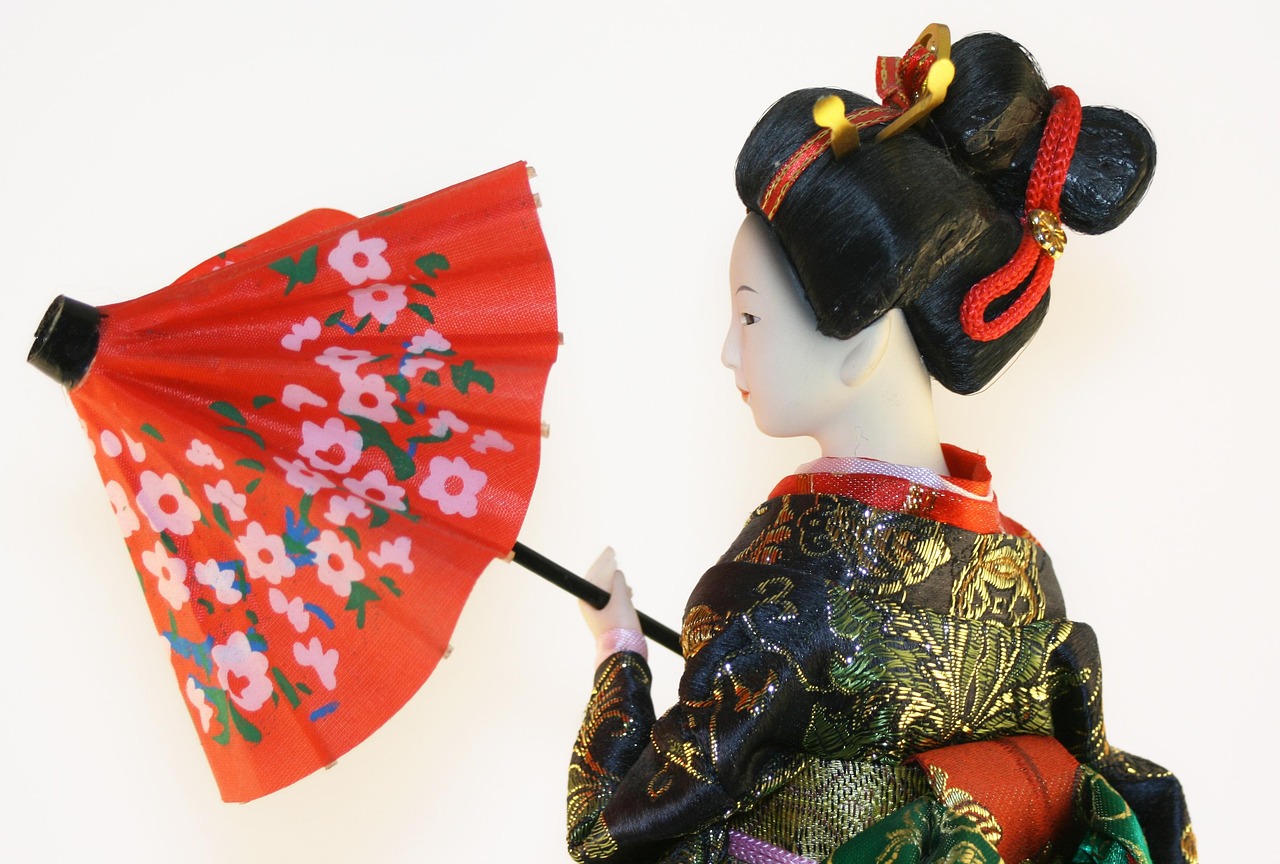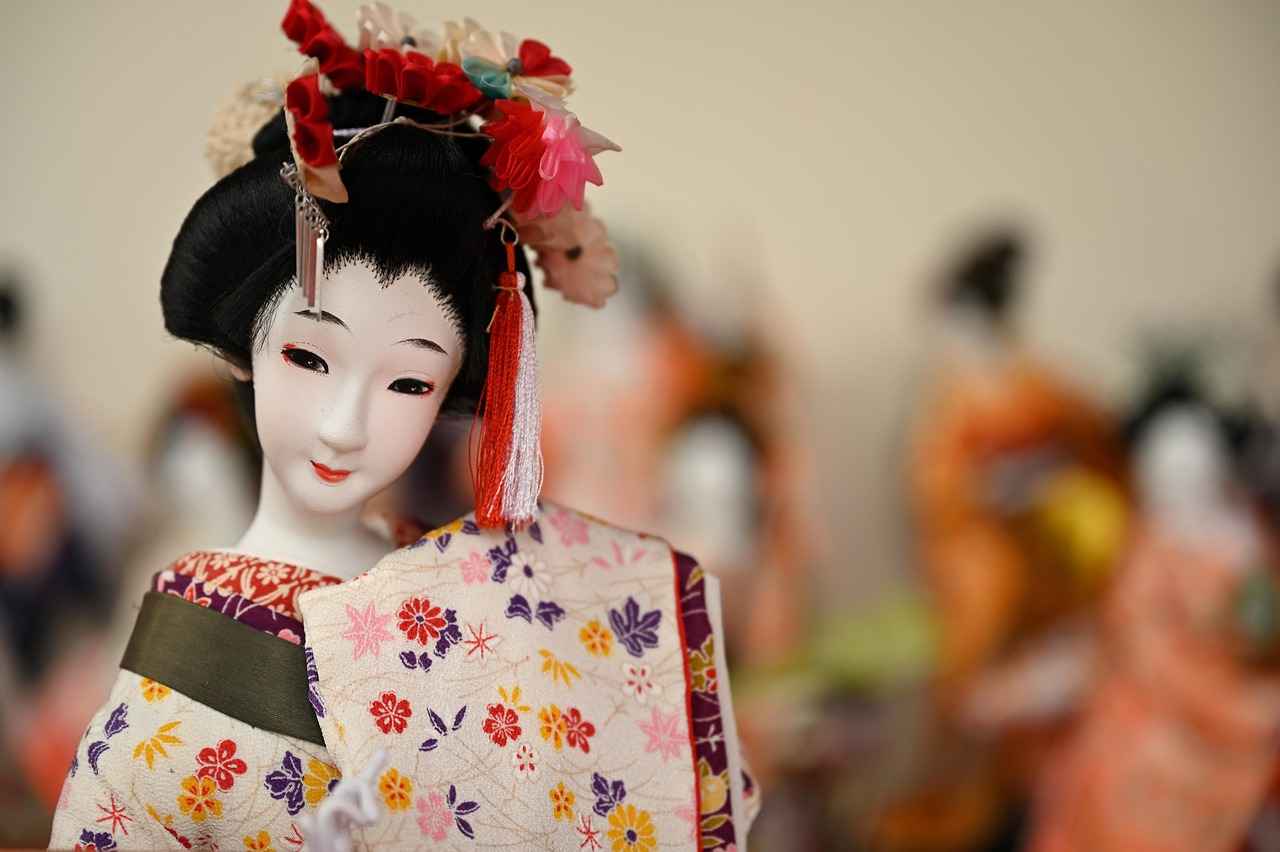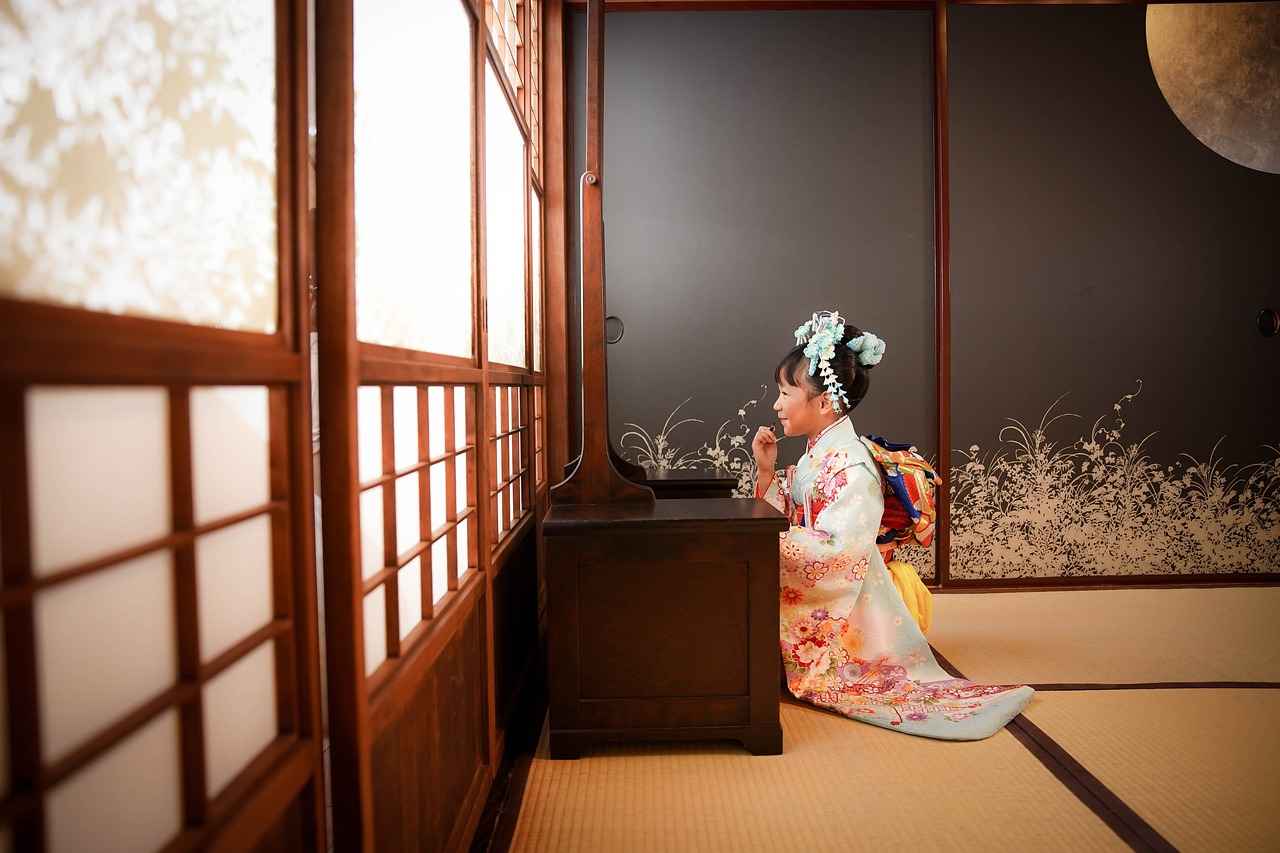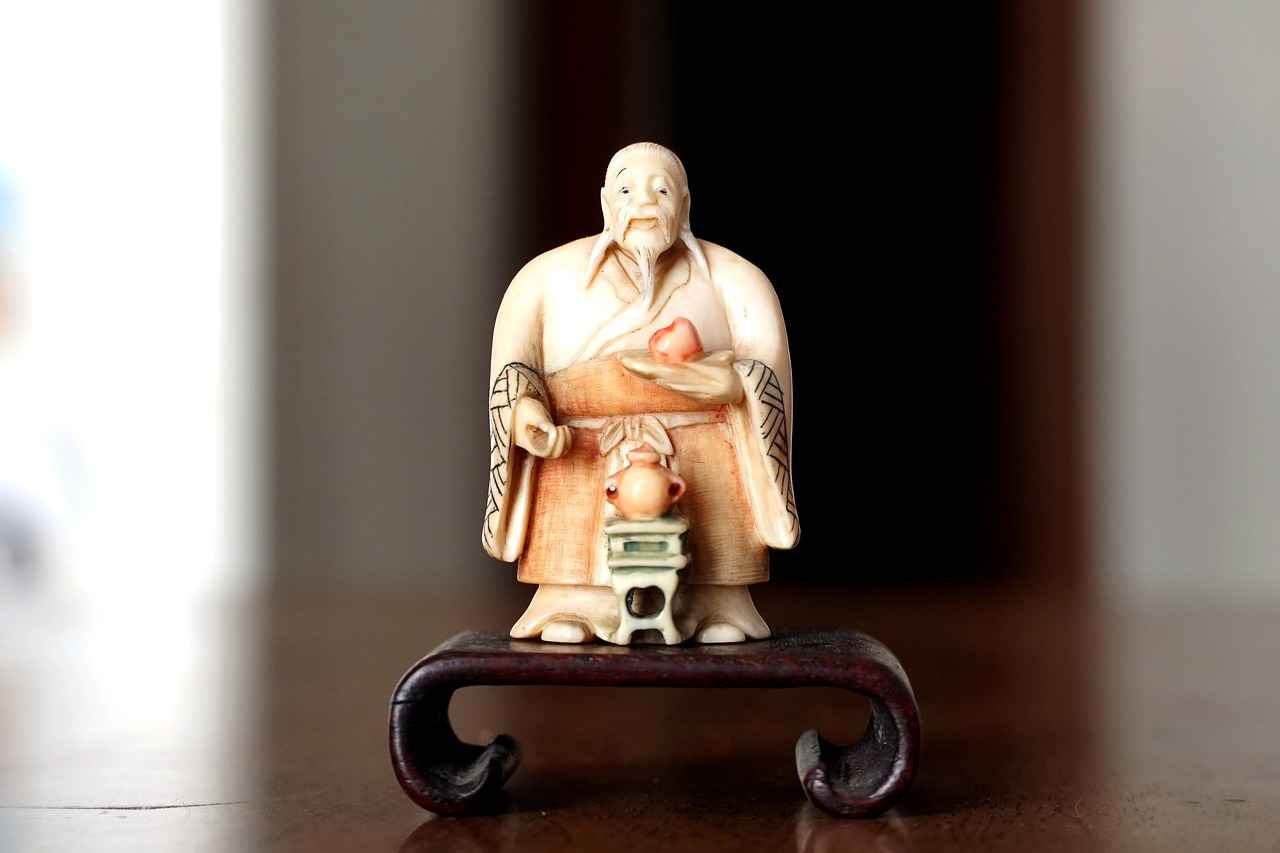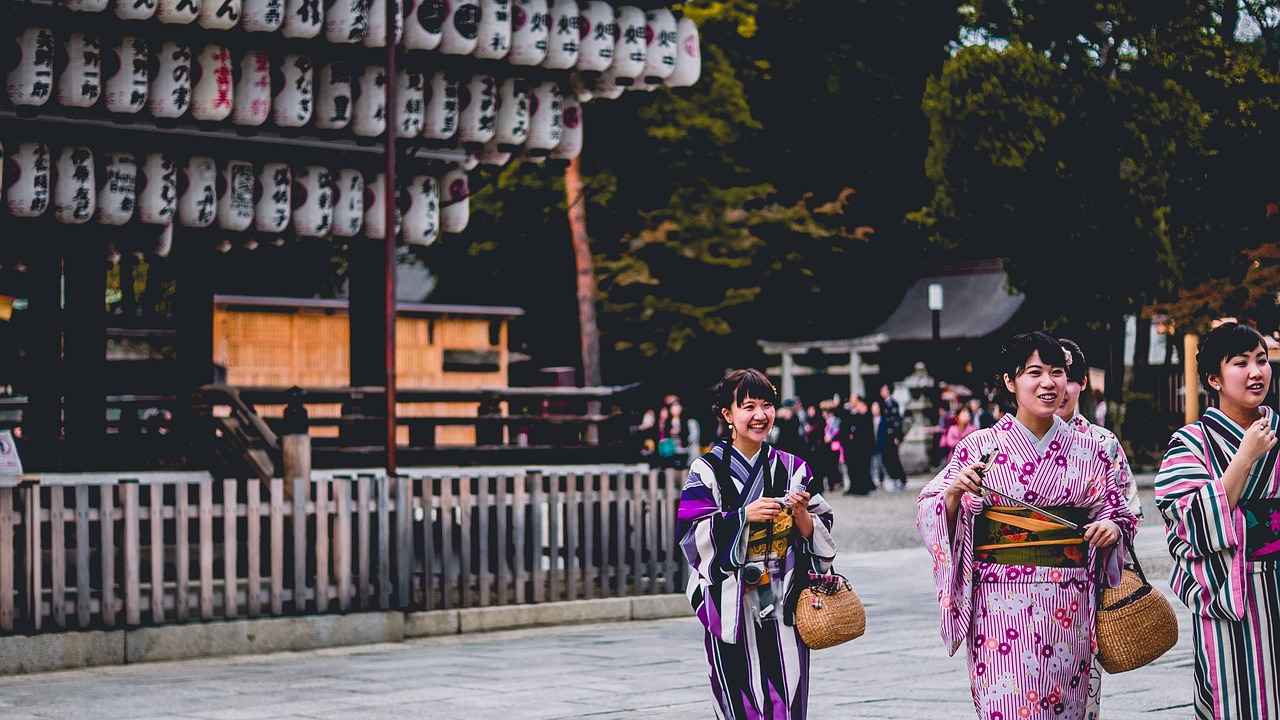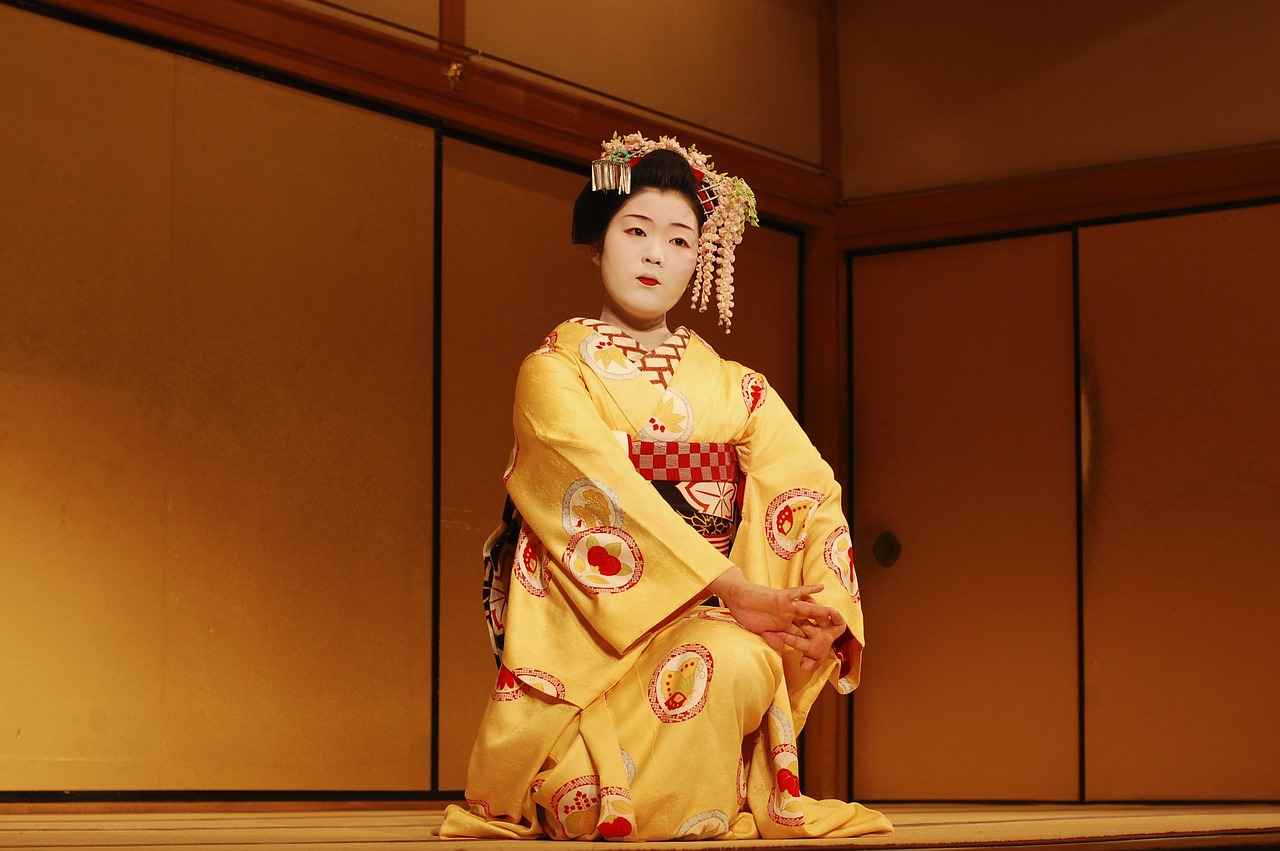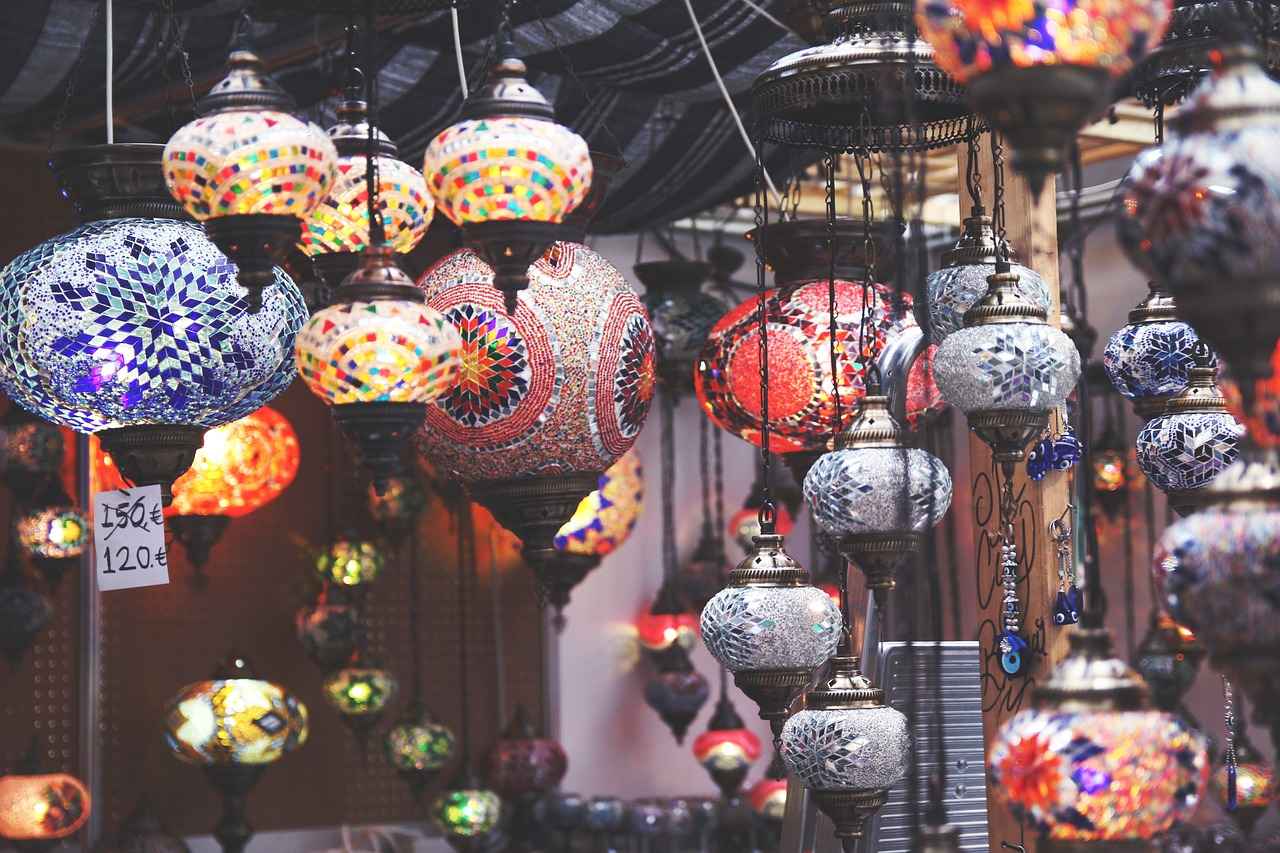This article delves into innovative techniques for blending traditional kimono styles with modern Western fashion. By offering practical tips and insights, we aim to help you create a unique and stylish outfit that truly stands out.
Understanding the Kimono
The kimono is not just a garment; it is a symbol of Japanese culture, representing elegance and artistry. With a rich history that dates back centuries, kimonos come in various styles, each with its own significance. Understanding this background will set the foundation for effectively pairing kimonos with Western clothing.
Choosing the Right Kimono
When selecting a kimono, consider factors such as fabric, color, and pattern. These elements are crucial in ensuring that your kimono complements your Western pieces seamlessly.
- Types of Kimono Fabrics
- Silk Kimonos: Known for their luxury and elegance, silk kimonos are perfect for formal events.
- Cotton Kimonos: These offer a more casual option, ideal for everyday wear.
Kimono Patterns and Colors
Each kimono pattern and color carries its own meaning. Choose one that resonates with your personal style and pairs well with the Western clothing you intend to wear.
Pairing Kimonos with Western Clothing
To create a harmonious blend of styles, consider layering your kimono with various Western clothing options:
- Layering with Denim: Denim jackets or jeans can provide a casual base, balancing traditional and modern aesthetics.
- Mixing with Dresses: Pair your kimono with a Western dress, such as a maxi or fitted dress, for an eye-catching look.
Accessorizing Your Outfit
Accessories are vital in completing your look. Choose footwear, jewelry, and bags that elevate both the kimono and Western clothing elements:
- Footwear Choices: From sandals to ankle boots, select shoes that complement your outfit.
- Jewelry and Bags: Opt for accessories that harmonize with your overall style.
Styling Tips for Different Occasions
Different events call for varied styling approaches. Adapt your kimono and Western clothing combination accordingly:
- Casual Outings: For a relaxed look, pair kimonos with jeans or shorts.
- Formal Events: Dress up your kimono with tailored Western pieces for a sophisticated appearance.
In conclusion, blending a kimono with Western clothing can create a unique and stylish outfit that celebrates both cultures. By understanding the nuances of kimonos and thoughtfully pairing them with modern pieces, you can achieve a fashionable look that stands out in any setting.
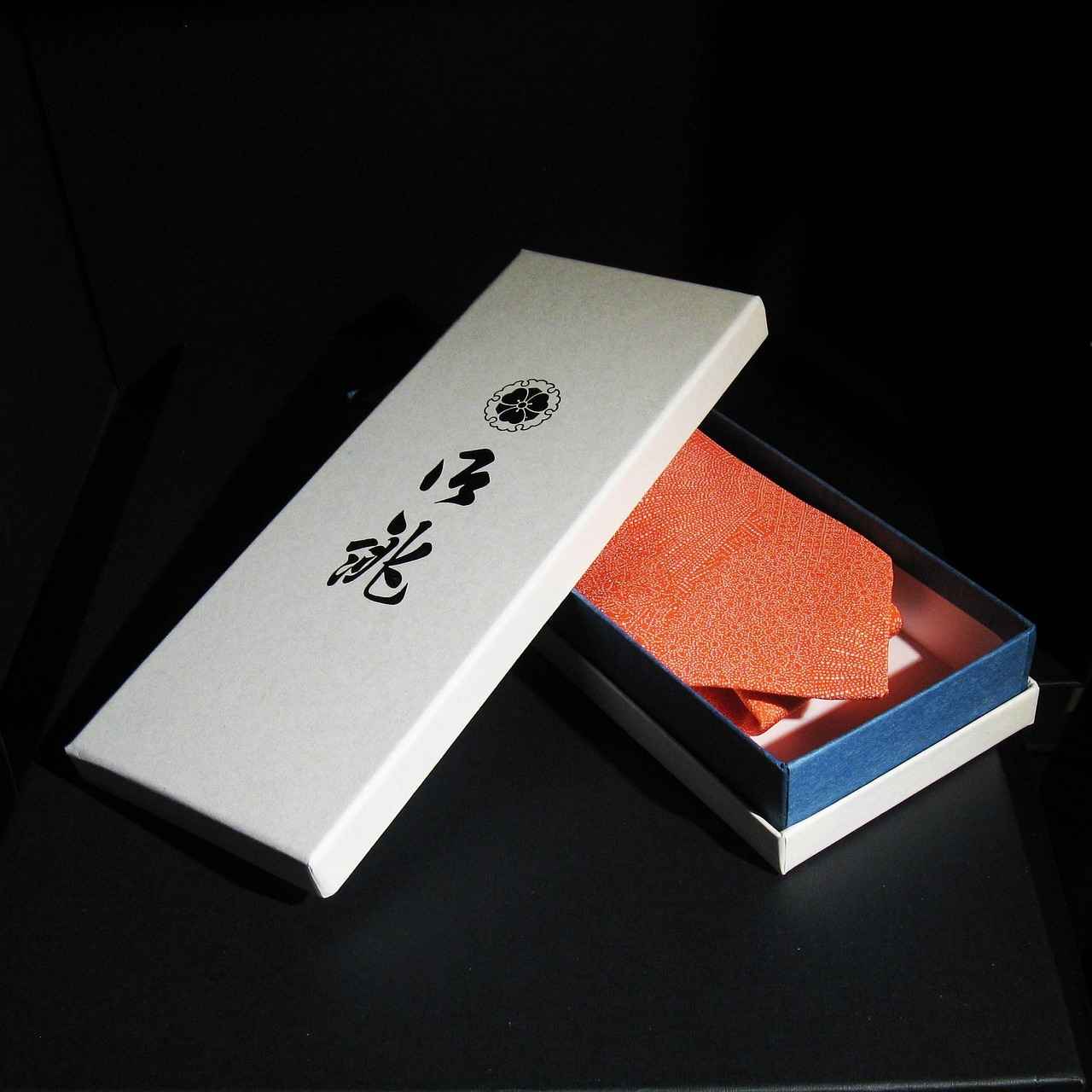
Understanding the Kimono
The kimono is a traditional Japanese garment that has a rich and intricate history, serving as a symbol of cultural identity and artistic expression. Originating in the Heian period (794-1185), the kimono has evolved through various historical epochs, reflecting the social status, lifestyle, and aesthetics of the time. Initially, it was worn by the aristocracy, but over centuries, it became accessible to the general population, adapting to regional styles and personal preferences.
One of the key aspects of the kimono is its significance in Japanese culture. It is not merely clothing; it represents a deep connection to Japanese heritage, rituals, and ceremonies. For instance, kimonos are often worn during special occasions such as weddings and tea ceremonies, emphasizing their importance in cultural practices.
Kimonos come in a variety of styles, each serving different purposes. The most common types include:
- Furisode: A formal kimono for young unmarried women, characterized by long sleeves.
- Tomesode: A formal kimono for married women, featuring shorter sleeves and often adorned with intricate designs.
- Yukata: A casual summer kimono made of cotton, typically worn at festivals.
- Hifu: A kimono-style jacket often worn over other garments for warmth.
The versatility of the kimono allows it to be paired with Western clothing, creating a unique and stylish look. By understanding the history and significance of the kimono, individuals can appreciate its cultural richness and find innovative ways to incorporate it into modern fashion.
In summary, the kimono is a timeless garment that encapsulates the essence of Japanese culture. Its various styles and meanings make it a perfect candidate for blending with Western fashion, allowing for creative expression and a celebration of cultural heritage.
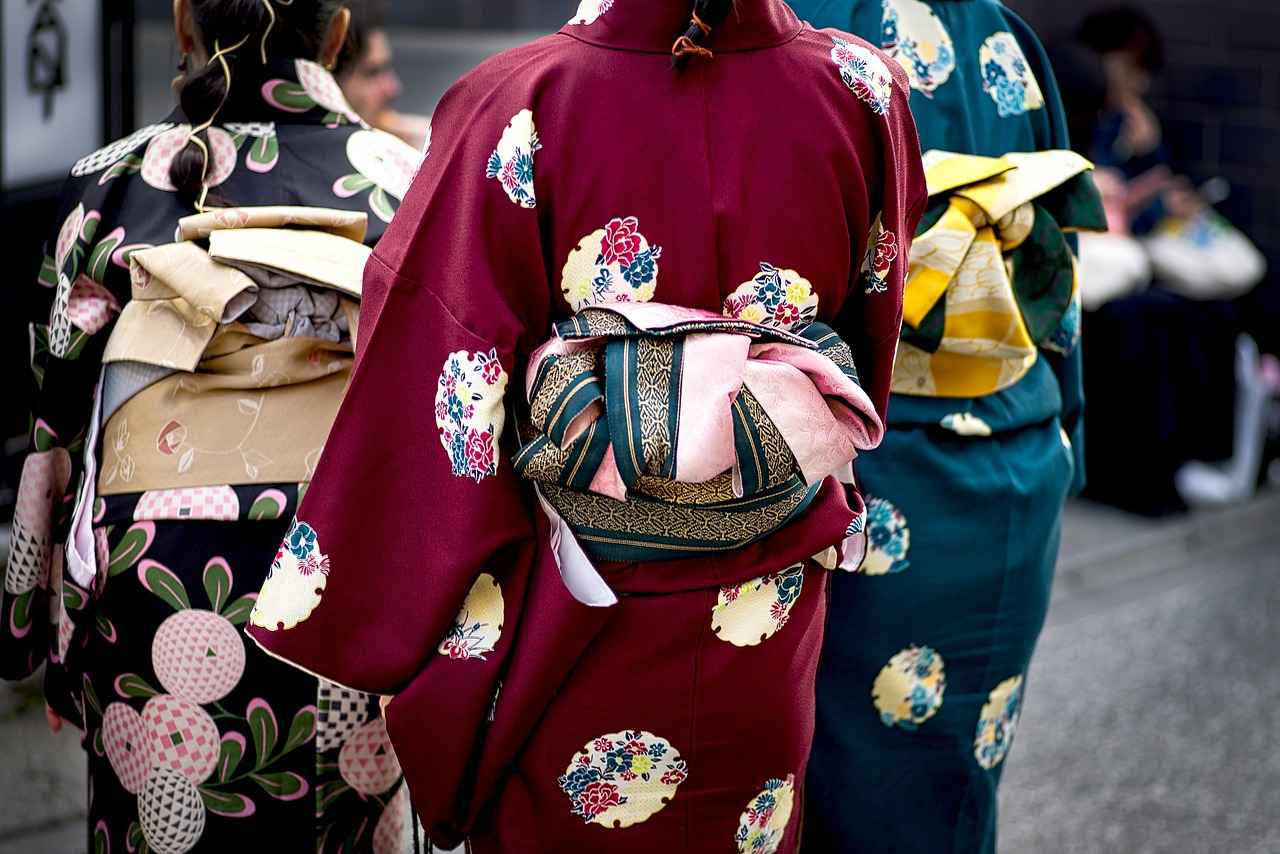
Choosing the Right Kimono
is a pivotal step in curating a stylish outfit that seamlessly blends traditional Japanese aesthetics with modern Western fashion. The kimono, a garment rich in history and culture, can be a stunning addition to your wardrobe when paired correctly. Here are some essential considerations to help you select the perfect kimono.
- Fabric: The fabric of your kimono can significantly impact its overall look and feel. Opt for silk for a luxurious and elegant appearance, perfect for formal occasions. For a more casual vibe, cotton kimonos are comfortable and versatile, making them ideal for everyday wear.
- Color: Color plays a crucial role in how well your kimono complements your Western attire. Choose colors that resonate with your personal style and harmonize with the hues of your other clothing pieces. For instance, a vibrant kimono can add a pop of color to a neutral outfit.
- Pattern: The patterns on kimonos tell stories and hold cultural significance. Floral patterns can evoke a sense of femininity and grace, while geometric designs might lend a modern touch. Understanding the meaning behind these patterns can enhance your outfit’s narrative.
When selecting a kimono, consider how it will interact with your existing wardrobe. A well-chosen kimono can serve as a statement piece, effortlessly elevating your look. Whether you’re dressing for a casual outing or a formal event, the right kimono can be the key to a successful outfit.
In conclusion, taking the time to carefully select your kimono based on fabric, color, and pattern will ensure that it not only complements your Western clothing but also stands out as a unique expression of style. Embrace the beauty of this traditional garment and let it enhance your fashion repertoire.
Types of Kimono Fabrics
When it comes to kimonos, the fabric choice plays a pivotal role in defining the overall aesthetic and functionality of the garment. Different fabrics can dramatically change the look and feel of a kimono, making it essential to explore the various options available. Below, we delve into three primary fabric types: silk, cotton, and synthetic materials, each offering unique characteristics that cater to different occasions and personal styles.
- Silk Kimonos: Renowned for their luxurious feel and elegant drape, silk kimonos are often favored for formal events. The rich textures and vibrant colors of silk can elevate any outfit, making it a perfect choice for special occasions. Additionally, silk’s natural sheen adds a sophisticated touch that can enhance a Western ensemble when paired thoughtfully.
- Cotton Kimonos: On the other hand, cotton kimonos provide a more casual and comfortable option. They are breathable and versatile, making them ideal for everyday wear. Cotton kimonos can be effortlessly paired with jeans, shorts, or casual dresses, allowing for a relaxed yet stylish look. Their durability also makes them a practical choice for various activities.
- Synthetic Kimonos: For those seeking affordability and easy care, synthetic fabrics are an excellent alternative. These kimonos often mimic the appearance of silk or cotton while being more resistant to wrinkles and stains. Synthetic options can be ideal for travel or outdoor events, where convenience and style must go hand in hand.
In conclusion, understanding the different fabrics available for kimonos is crucial for selecting the right piece that complements your intended outfit style. Whether you opt for the elegance of silk, the comfort of cotton, or the practicality of synthetic materials, each fabric offers unique benefits that can enhance your overall look.
Silk Kimonos
are not just garments; they are a celebration of culture, elegance, and luxury. These exquisite pieces are crafted from high-quality silk, which gives them a distinctive sheen and a soft, flowing texture. Their rich colors and intricate patterns can effortlessly elevate any Western outfit, making them a perfect choice for formal occasions.
When you don a silk kimono, you are embracing a piece of history that dates back centuries. Traditionally worn in Japan, kimonos symbolize grace and sophistication. Today, they have transcended cultural boundaries, becoming a fashionable statement in Western wardrobes. The versatility of silk kimonos allows them to be paired with a variety of Western clothing styles, from elegant dresses to tailored suits.
One of the standout features of silk kimonos is their ability to add a touch of luxury to any ensemble. For instance, when paired with a simple black dress, a silk kimono can transform the outfit into a stunning look suitable for a gala or wedding. The fabric’s natural luster catches the light, creating an eye-catching effect that draws attention.
Moreover, the patterns on silk kimonos can tell a story, often reflecting nature or traditional Japanese motifs. This cultural significance can be a conversation starter, making your outfit not only stylish but also meaningful. Whether you choose a floral design or a more abstract pattern, the right silk kimono can serve as the focal point of your outfit.
In conclusion, silk kimonos are a remarkable addition to any wardrobe, offering both elegance and versatility. They can seamlessly bridge the gap between traditional and modern fashion, allowing wearers to express their unique style while honoring cultural heritage. Embrace the luxury of silk kimonos and let them enhance your Western clothing choices for a truly unique look.
Cotton Kimonos
are an excellent choice for those seeking a blend of style and comfort in their everyday wardrobe. These versatile garments are not only lightweight and breathable, but they also offer a unique aesthetic that can elevate any casual outfit. Their relaxed fit makes them perfect for lounging at home or running errands, while their distinct design adds a touch of cultural flair to your ensemble.
One of the most appealing aspects of cotton kimonos is their versatility. They can be effortlessly paired with a variety of Western clothing items, making them a staple in any fashion-forward individual’s closet. For instance, when styled with jeans, a cotton kimono creates a laid-back yet chic look. Opt for a fitted pair of jeans to balance the loose silhouette of the kimono, and complete the outfit with a simple top to maintain focus on the kimono’s design.
Additionally, cotton kimonos can be beautifully matched with casual dresses. A flowy maxi dress underneath a kimono provides an interesting layer that enhances your overall appearance. This combination is perfect for summer outings or casual gatherings, allowing for both comfort and style. You might choose a kimono with vibrant colors or intricate patterns to make a statement, while a more subdued design can serve as a sophisticated layering piece.
- Comfort: Ideal for warm weather due to their breathable fabric.
- Style: Adds a unique touch to any outfit, making it stand out.
- Layering: Perfect for creating depth in your outfit with various styles.
In conclusion, cotton kimonos are a fantastic addition to any wardrobe, providing a stylish yet comfortable option for everyday wear. Their ability to pair seamlessly with jeans or casual dresses allows for endless outfit possibilities, making them a must-have for anyone looking to enhance their fashion game.
Kimono Patterns and Colors
play a crucial role in defining the overall aesthetic and cultural significance of these beautiful garments. Understanding the various patterns and colors can greatly enhance your ability to choose a kimono that resonates with your personal style while seamlessly blending with your existing Western wardrobe.
The patterns found on kimonos often carry deep cultural meanings. For instance, floral designs symbolize growth and beauty, while geometric shapes can represent harmony and balance. By selecting a kimono with a pattern that speaks to you, you not only honor its tradition but also express your individuality.
When it comes to colors, each hue can evoke different emotions and convey various messages. For example:
- Red: Symbolizes happiness and good fortune.
- Blue: Represents calmness and stability.
- Black: Often associated with elegance and formality.
- White: Signifies purity and simplicity.
Choosing a kimono that aligns with your personal style involves considering not only the patterns and colors but also how they will coordinate with your Western clothing. For example, a vibrant floral kimono can add a pop of color to a simple white t-shirt and jeans, creating a striking contrast that enhances both styles.
Additionally, it’s important to think about the occasion when selecting your kimono. A more subdued color palette with intricate patterns may be suitable for formal events, while bright colors and playful designs can be perfect for casual outings.
In summary, understanding the significance of patterns and colors in kimonos allows you to make informed choices that reflect your personal style. By thoughtfully selecting a kimono that complements your Western pieces, you can create a unique and visually appealing outfit that stands out in any setting.

Pairing Kimonos with Western Clothing
Combining traditional kimonos with modern Western clothing can create a stunning and unique style that celebrates the best of both worlds. This fashion fusion not only allows for personal expression but also showcases the versatility of kimonos in contemporary wardrobes.
Understanding the Aesthetic
The key to successful pairing lies in understanding the aesthetic of both garments. Kimonos are often characterized by their flowing silhouettes and intricate patterns, while Western clothing tends to focus on structured lines and casual styles. By blending these elements, you can create a look that is both harmonious and eye-catching.
Choosing the Right Western Pieces
- Denim Jackets: A classic denim jacket can complement the elegance of a kimono while adding a casual touch. Opt for a fitted style to balance the kimono’s volume.
- Maxi Dresses: Pairing a kimono with a flowy maxi dress can enhance the layering effect, creating a bohemian vibe that is perfect for summer outings.
- Tailored Trousers: For a more polished look, consider wearing a kimono over tailored trousers. This combination is ideal for formal events or professional settings.
Accessorizing for Impact
Accessories can elevate your outfit, making it more cohesive. Consider the following:
- Footwear: Choose sandals for a relaxed look or ankle boots for a more sophisticated vibe.
- Jewelry: Opt for minimalistic pieces that won’t overpower the kimono’s design.
- Bags: A structured handbag can provide a nice contrast to the soft lines of a kimono.
Conclusion
Pairing kimonos with Western clothing opens up a world of fashion possibilities. By understanding the strengths of both styles and accessorizing thoughtfully, you can create outfits that are not only stylish but also uniquely yours. Embrace this fusion and let your creativity shine!
Layering with Denim
is an excellent way to create a stylish and balanced outfit that combines the traditional elegance of a kimono with the casual appeal of Western fashion. Denim jackets and jeans serve as versatile staples in any wardrobe, offering a perfect base to complement the intricate designs and rich fabrics of kimonos.
When choosing to layer a kimono with denim, consider the following:
- Denim Jackets: A classic denim jacket can add a rugged yet chic vibe to your outfit. Opt for a fitted or slightly oversized style depending on your preference. The contrast between the structured denim and the flowing silhouette of a kimono creates an interesting visual balance.
- Denim Jeans: Pairing a kimono with denim jeans is another fantastic option. Whether you choose skinny jeans for a sleek look or wide-leg jeans for a more relaxed vibe, this combination allows you to showcase the kimono’s beauty while remaining comfortable.
- Color Coordination: When selecting denim to pair with your kimono, consider the color palette. Light wash denim can create a fresh, summery feel, while dark wash denim can add depth and sophistication. Ensure that the colors of both pieces harmonize to enhance your overall look.
- Accessorizing: To complete your outfit, think about accessories that bridge the gap between the two styles. A simple belt can cinch the waist of a kimono worn over jeans, while statement jewelry can draw attention to the intricate patterns of the kimono.
By thoughtfully layering denim with a kimono, you can achieve a unique look that celebrates both traditional and modern aesthetics. This versatile pairing not only enhances your style but also allows for personal expression, making it a go-to choice for any casual occasion.
Mixing with Dresses
Mixing a kimono with Western dresses is a fantastic way to create a distinctive look that merges traditional elegance with contemporary fashion. This combination not only showcases the beauty of the kimono but also allows for versatility in style. Whether you opt for a flowing maxi dress or a fitted dress, the pairing can yield stunning results that cater to various occasions.
When choosing a maxi dress, consider the length and flow of the fabric. A long, flowing maxi dress can create a beautiful silhouette when layered with a kimono. The lightweight nature of both garments can result in a harmonious blend, perfect for summer events or casual outings. To enhance this look, you can select a kimono with vibrant colors or intricate patterns that complement the dress, adding depth and interest to your outfit.
On the other hand, a fitted dress can provide a striking contrast to the loose, flowing lines of a kimono. This combination can be particularly effective for more formal occasions. A tailored dress paired with a silk kimono can project sophistication and elegance. Opt for kimonos with subtle designs or muted tones to ensure that the fitted dress remains the focal point of your ensemble.
| Dress Type | Kimono Style | Occasion |
|---|---|---|
| Maxi Dress | Casual Cotton | Day Out |
| Fitted Dress | Elegant Silk | Formal Event |
Accessorizing is also essential when mixing these styles. Footwear such as sandals can complement a maxi dress, while heels can elevate a fitted dress. Additionally, choosing the right jewelry can enhance the overall look, allowing you to express your personal style while honoring the traditional elements of the kimono.
In conclusion, pairing a kimono with Western dresses opens up a world of fashion possibilities. By thoughtfully selecting dress styles and kimonos, along with appropriate accessories, you can create a unique and stylish outfit that reflects both cultures beautifully.
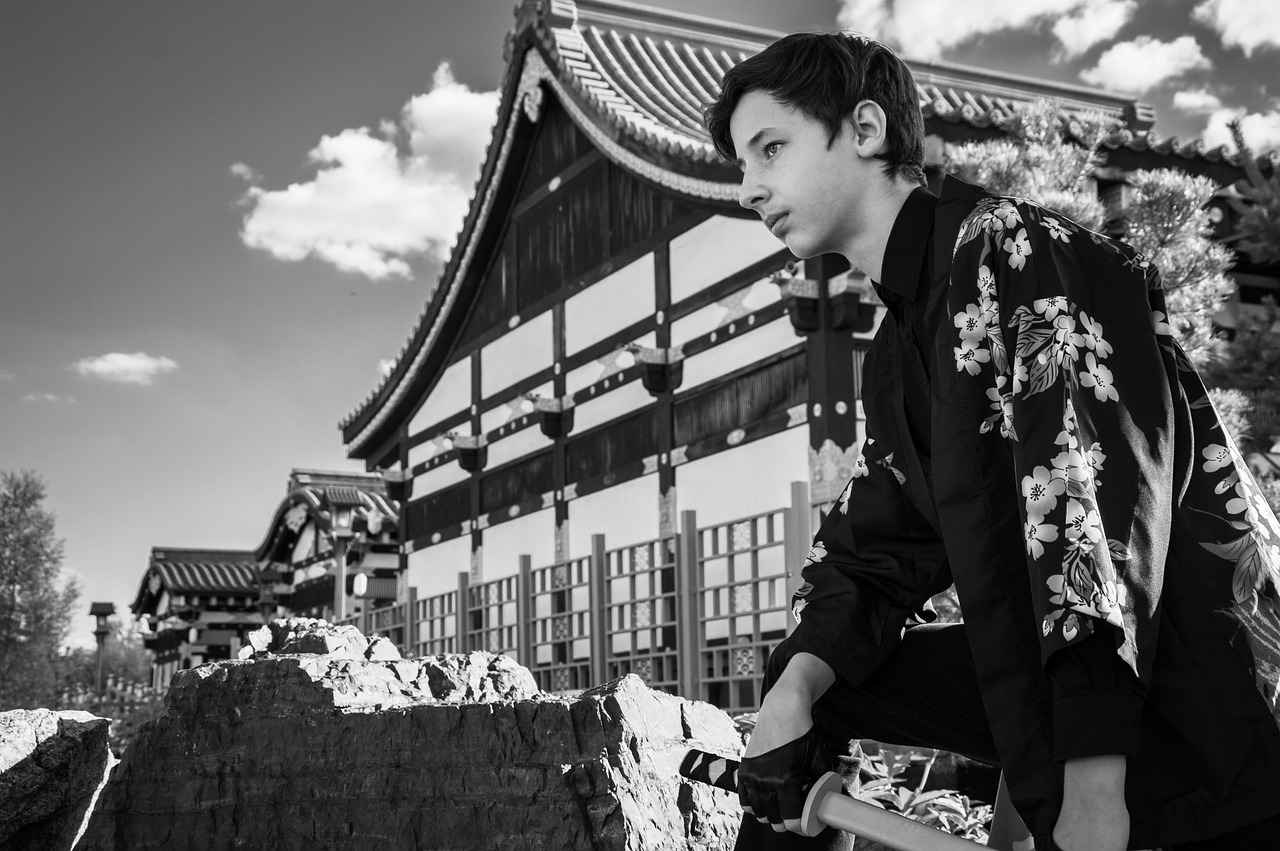
Accessorizing Your Outfit
When it comes to fashion, accessories are not just an afterthought; they are essential elements that can elevate your overall look. In the context of blending a traditional kimono with Western clothing, the right accessories can create a harmonious and stylish outfit. Here are some tips on how to choose the perfect accessories to complement your ensemble.
- Footwear: The right shoes can significantly impact your outfit. For a casual look, consider stylish sandals or flats that allow the kimono to flow freely. If you’re aiming for a more polished appearance, ankle boots or heels can add sophistication and elevate your look.
- Jewelry: When accessorizing with jewelry, less is often more. Choose pieces that enhance rather than overpower your outfit. For instance, a delicate necklace or a pair of earrings can add a touch of elegance without overwhelming the kimono’s intricate patterns.
- Bags: The type of bag you select can also influence your overall style. A clutch or a small crossbody bag can be perfect for formal occasions, while a larger tote can work well for casual outings. Consider the colors and patterns of your bag to ensure they complement your kimono and Western clothing.
- Belts: Adding a belt to your outfit can help define your waist and create a more structured silhouette. A thin, stylish belt can accentuate the kimono while integrating seamlessly with Western pieces.
In conclusion, the right accessories can transform your outfit, making it uniquely yours. By carefully selecting footwear, jewelry, bags, and belts, you can enhance the beauty of your kimono and Western clothing combination, creating a look that is both stylish and personal.
Footwear Choices
play a crucial role in defining the overall aesthetic of your outfit, especially when pairing a kimono with Western clothing. The right shoes can enhance your look, providing both comfort and style. Below, we explore various footwear options that work harmoniously with kimonos and Western attire.
- Sandals: A classic choice for warm weather, sandals can add a relaxed vibe to your outfit. Opt for strappy sandals or chic slides that complement the colors of your kimono. They work wonderfully with cotton kimonos for a casual day out.
- Ankle Boots: For a more edgy look, consider ankle boots. These can be paired with both long and short kimonos, adding a modern twist to the traditional garment. Choose styles in neutral colors to ensure versatility.
- Flats: Ballet flats or loafers offer a comfortable yet stylish option. They are perfect for casual outings and can easily be paired with a kimono layered over a simple dress or jeans.
- Heeled Mules: If you’re aiming for a more polished look, heeled mules can elevate your outfit. They pair beautifully with silk kimonos, making them suitable for semi-formal occasions.
- Canvas Sneakers: For a sporty and trendy look, canvas sneakers are an excellent choice. They work particularly well with cotton kimonos and casual Western styles, perfect for running errands or casual meet-ups.
When choosing footwear, consider the occasion and the overall look you wish to achieve. Remember that the key is to balance the traditional elements of the kimono with the modern flair of Western fashion. By selecting the right shoes, you can create a unique and stylish outfit that stands out.
In conclusion, experimenting with different footwear styles can lead to exciting outfit combinations that reflect your personal style while respecting the cultural significance of the kimono.
Jewelry and Bags
Choosing the right jewelry and bags can significantly elevate your outfit. When pairing a kimono with Western elements, it’s essential to select accessories that enhance your overall look while maintaining a harmonious balance between the traditional and the modern.
To begin with, consider the style and color of your kimono. A vibrant, patterned kimono might require more subtle accessories to avoid overwhelming the outfit, while a simpler kimono can be paired with bold jewelry and bags for a striking effect. Here are some tips to guide your accessory choices:
- Jewelry: Opt for pieces that reflect the colors or patterns in your kimono. For instance, if your kimono features floral designs, consider floral-themed jewelry or pieces in complementary shades. Layering necklaces can also add depth, but ensure they don’t clash with the kimono’s neckline.
- Bags: Choose bags that align with the occasion and style of your outfit. A structured handbag can add sophistication, while a slouchy bag may contribute to a more relaxed vibe. Materials matter too; a fabric bag may work better with a cotton kimono, while a leather bag can enhance the elegance of a silk kimono.
Furthermore, think about the occasion. For formal events, opt for minimalistic jewelry and a clutch that matches your kimono’s color palette. In contrast, for casual outings, feel free to experiment with playful accessories that showcase your personality.
In conclusion, the right jewelry and bags can transform your outfit, bridging the gap between traditional kimono styles and contemporary Western fashion. By thoughtfully selecting these accessories, you can create a unique look that is both stylish and culturally rich.
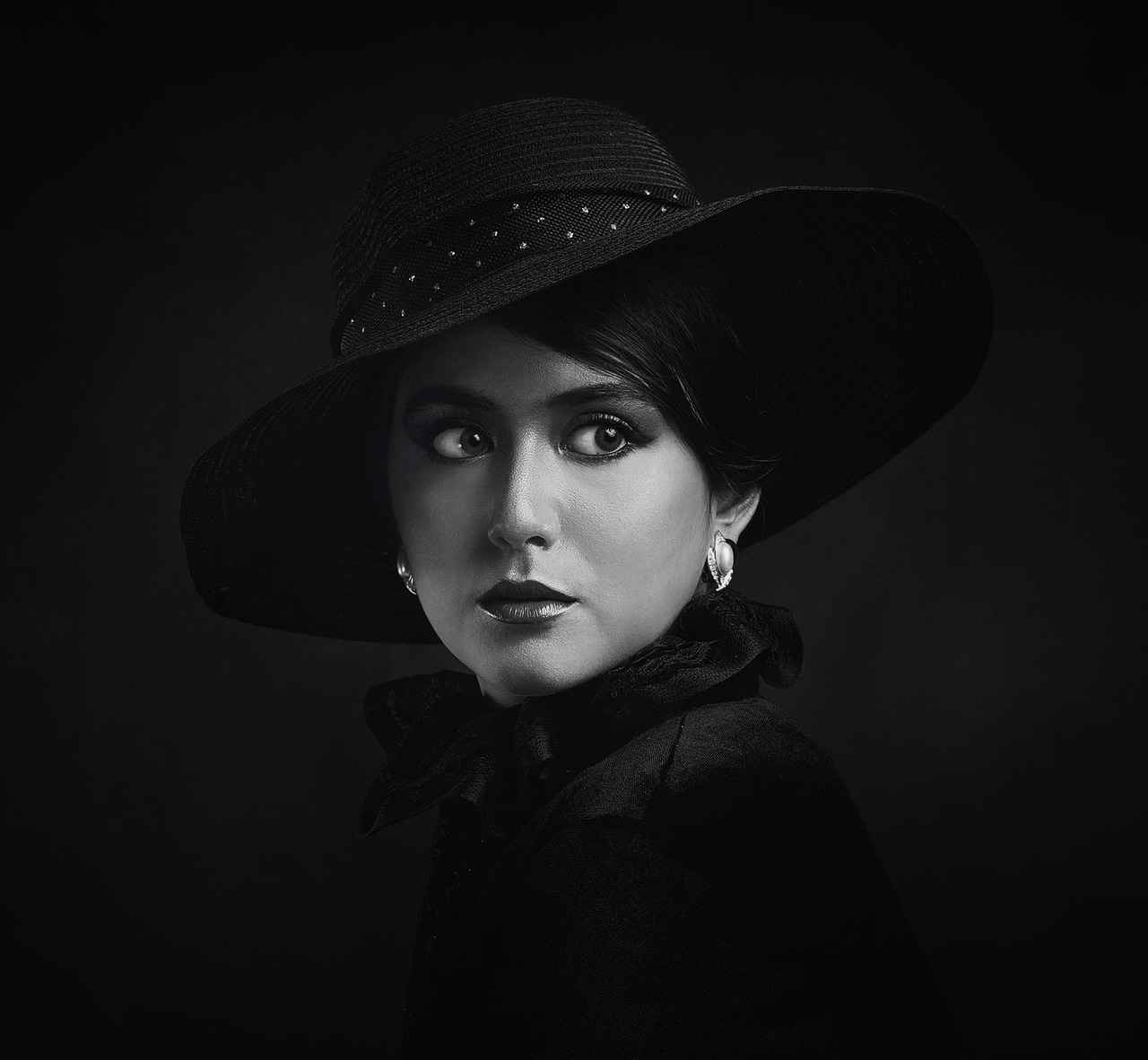
Styling Tips for Different Occasions
When it comes to fashion, versatility is key, especially when pairing a kimono with Western clothing. Different occasions call for distinct styling approaches, and understanding how to adapt your outfit can elevate your look significantly. Here are some tailored tips for various settings:
- Casual Outings: For relaxed gatherings or weekend brunches, consider a lightweight cotton kimono paired with denim shorts or comfortable jeans. This combination offers a chic yet laid-back vibe. Accessorize with casual sandals and a crossbody bag for a complete look.
- Formal Events: When attending a wedding or a formal dinner, opt for a silk kimono that exudes elegance. Pair it with a fitted dress or tailored trousers for a sophisticated appearance. Choose heels and statement jewelry to enhance the overall outfit. A clutch bag can add a polished touch.
- Work Attire: To incorporate a kimono into your professional wardrobe, select a simple, neutral-colored kimono and layer it over a blouse and tailored pants. This creates a stylish yet appropriate look for the office. Pair with flats or low heels for comfort throughout the workday.
- Evening Out: For a night out, a vibrant, patterned kimono can be the perfect statement piece. Combine it with a fitted dress or high-waisted jeans and a crop top. Don’t forget to accessorize with bold earrings and strappy heels to complete your ensemble.
- Seasonal Considerations: Adjust your kimono choice based on the season. Lightweight fabrics are perfect for summer, while heavier materials can provide warmth in the winter. Layering with appropriate clothing ensures comfort and style throughout the year.
By understanding the context of your outing and selecting the right combination of kimono and Western clothing, you can create a unique and stylish look that is appropriate for any occasion.
Causal Outings
Casual Outings present a wonderful opportunity to showcase your unique style while ensuring comfort. When it comes to pairing a kimono with Western clothing for these relaxed occasions, the key lies in choosing the right fit and fabric.
Start by selecting a kimono made from breathable materials such as cotton or lightweight linen. These fabrics not only offer comfort but also allow for easy movement, making them perfect for a day out. A kimono in a vibrant color or with an eye-catching pattern can serve as the focal point of your outfit.
Pairing Options:
- Jeans: Opt for a pair of well-fitted jeans, either skinny or boyfriend style, to balance the flowing silhouette of the kimono. This combination offers a chic yet effortless vibe.
- Shorts: For warmer days, consider pairing your kimono with denim shorts. This look is both casual and stylish, perfect for outdoor gatherings or brunch with friends.
- Casual Dresses: A simple t-shirt dress layered with a kimono can create a relaxed and fashionable outfit. Choose neutral tones for the dress to let the kimono stand out.
To complete your look, accessorize with comfortable footwear such as sandals or stylish sneakers. A crossbody bag can add practicality while keeping the outfit trendy. Don’t forget to choose minimalist jewelry to maintain a balanced aesthetic.
In conclusion, creating a stylish outfit for casual outings with a kimono is all about comfort and personal expression. By mixing relaxed fits with vibrant kimonos, you can achieve a unique look that perfectly embodies both tradition and modernity.
Formal Events
When it comes to , the challenge often lies in how to blend traditional attire with modern fashion sensibilities. A kimono, with its rich cultural heritage, can be an exquisite choice for such occasions. To create a polished and sophisticated look, consider pairing your kimono with tailored Western pieces.
One effective way to achieve this is by choosing a fitted dress. A sleek, form-fitting dress can serve as a beautiful foundation, allowing the kimono to act as a stunning overlay. Opt for dresses in solid colors or subtle patterns that complement the kimono’s design, ensuring a cohesive appearance. This combination not only highlights the elegance of the kimono but also adds a contemporary twist, making you stand out in any formal gathering.
Alternatively, elegant trousers can be paired with the kimono for a more refined look. Tailored trousers in a neutral shade can balance the vibrant colors often found in kimonos. This pairing creates a sophisticated silhouette that is both modern and respectful of tradition. Consider high-waisted trousers that elongate the legs and provide a flattering shape, enhancing the overall outfit.
Accessories play a crucial role in completing this look. Choose statement jewelry that complements the kimono without overwhelming it. A pair of elegant heels can elevate your outfit, adding a touch of glamour. Additionally, a chic clutch or handbag can serve as a practical yet stylish accessory to carry your essentials.
In conclusion, dressing up your kimono for formal occasions by pairing it with tailored Western pieces like a fitted dress or elegant trousers can create a unique and sophisticated look. This blend of styles not only honors the beauty of the kimono but also embraces modern fashion trends, making it a versatile choice for any formal event.
Frequently Asked Questions
- Can I wear a kimono with any Western outfit?
Absolutely! The beauty of a kimono lies in its versatility. You can pair it with casual wear like jeans or dresses for a relaxed look, or dress it up with tailored pieces for formal occasions. Just make sure the colors and patterns complement each other!
- What type of kimono is best for beginners?
If you’re just starting out, consider opting for a cotton kimono. They’re comfortable, easy to style, and perfect for everyday wear. Plus, they come in a variety of colors and patterns, making them a fun addition to your wardrobe!
- How do I choose the right accessories for my kimono outfit?
When accessorizing, think about balance. If your kimono has bold patterns, go for simpler jewelry and bags. Conversely, if your kimono is more subdued, feel free to add statement pieces. Footwear is also key—sandals or ankle boots can really tie your look together!
- Are there any occasions where wearing a kimono is not suitable?
While kimonos are quite versatile, they may not be appropriate for very formal business settings or events with strict dress codes. However, for most casual and semi-formal occasions, a kimono can be a stylish choice!
- Can I wear a kimono in any season?
Definitely! Light cotton kimonos are perfect for summer, while silk or heavier fabrics can keep you warm in cooler months. Just layer appropriately, and you can rock a kimono year-round!
